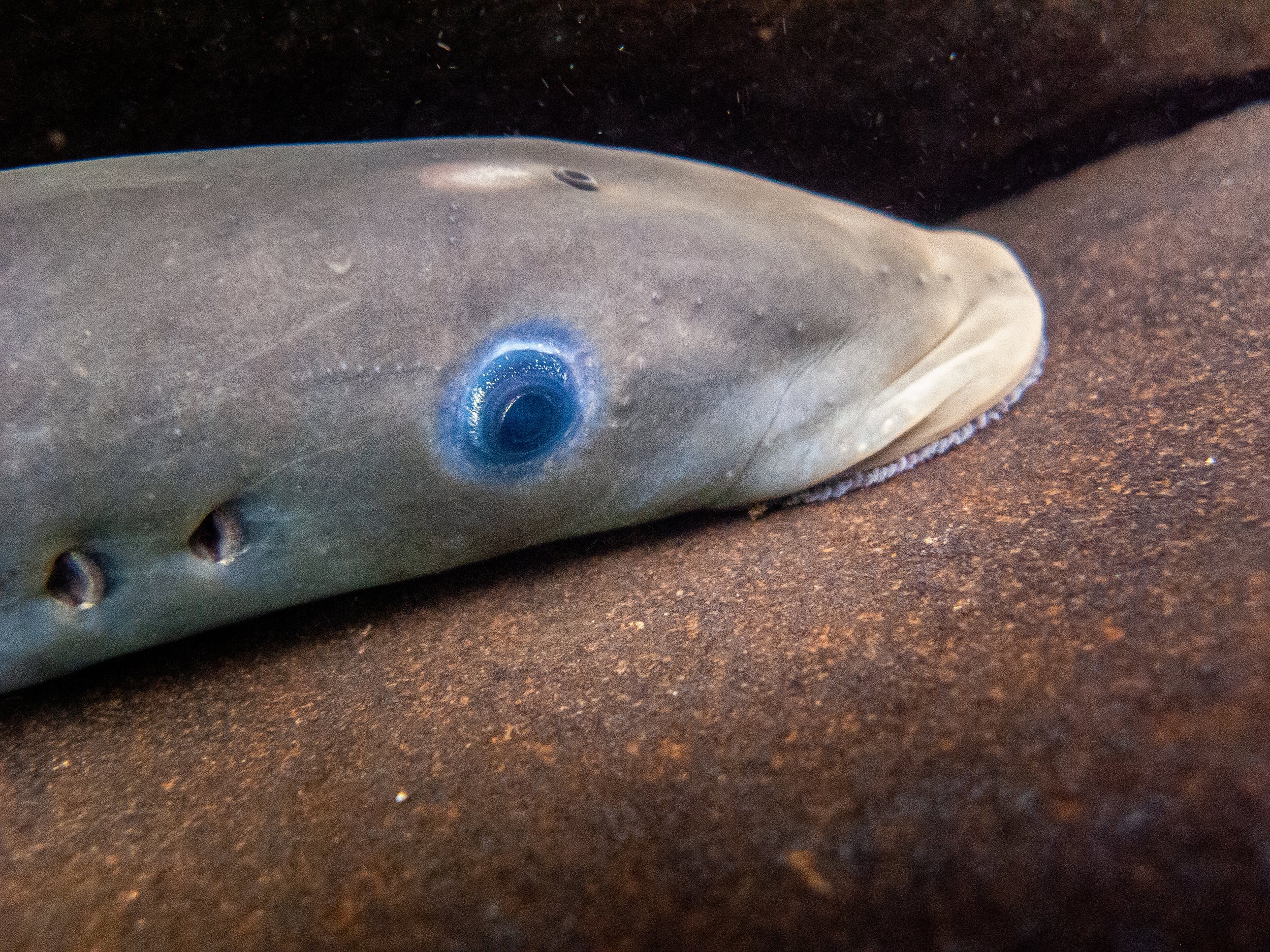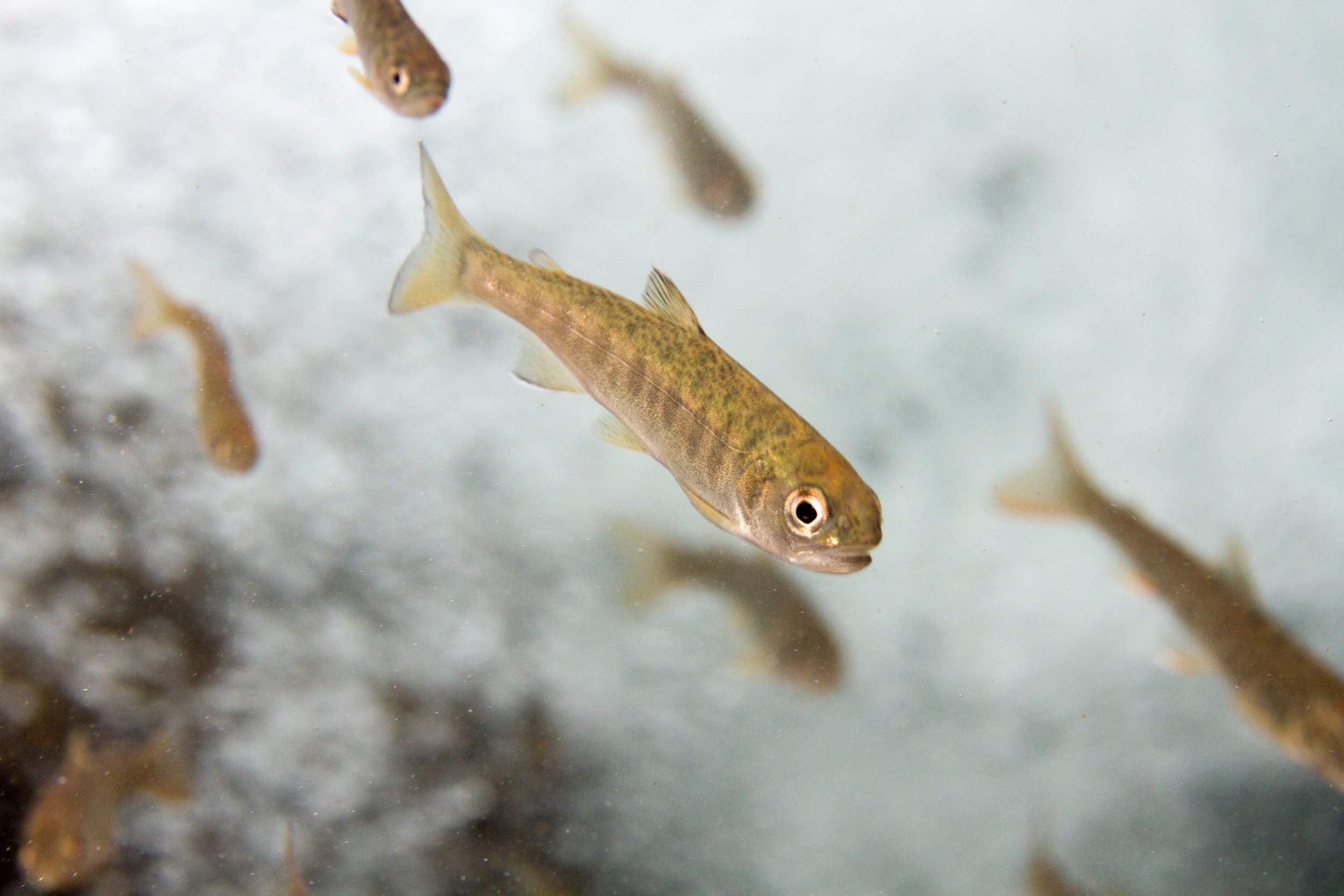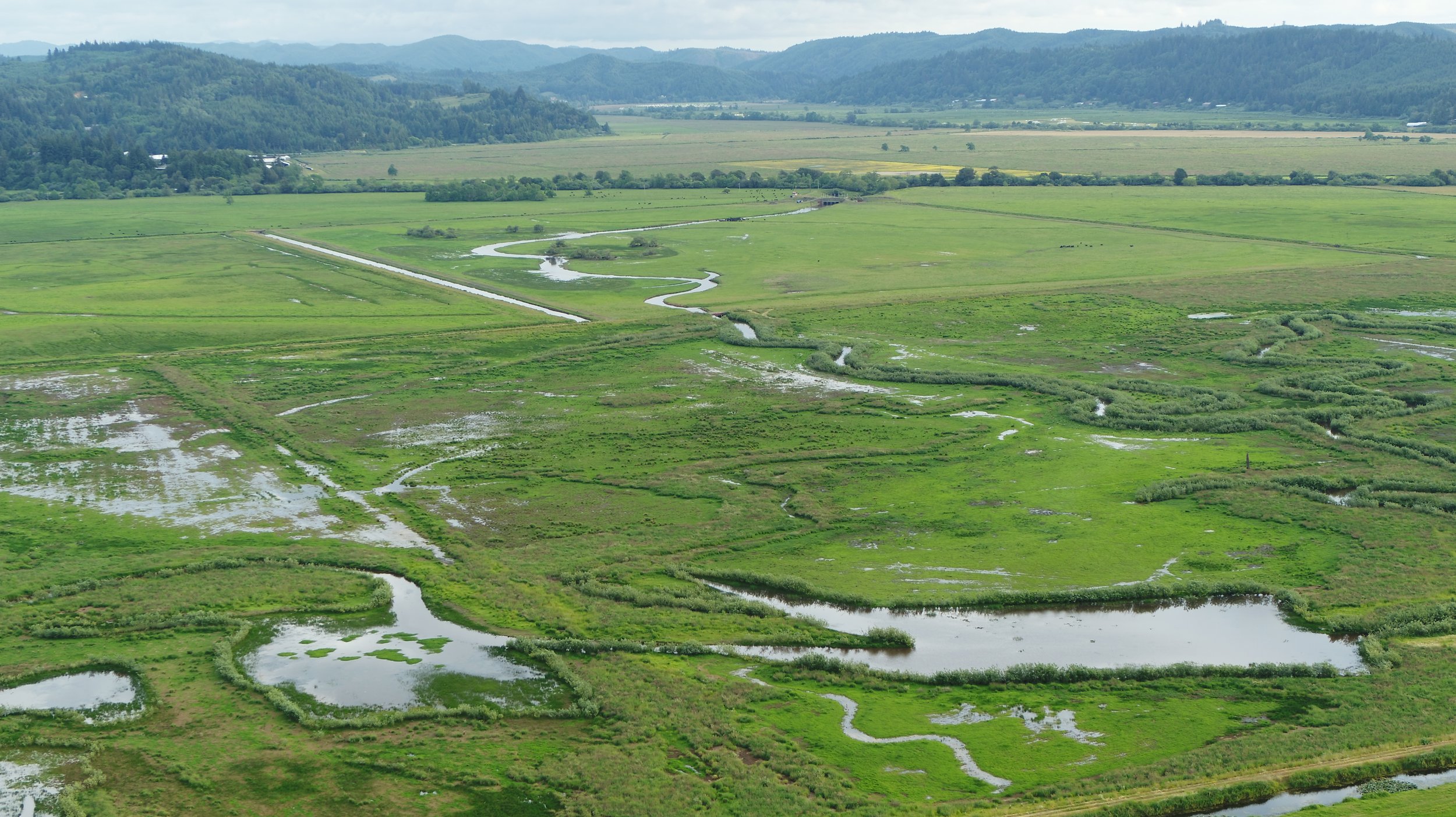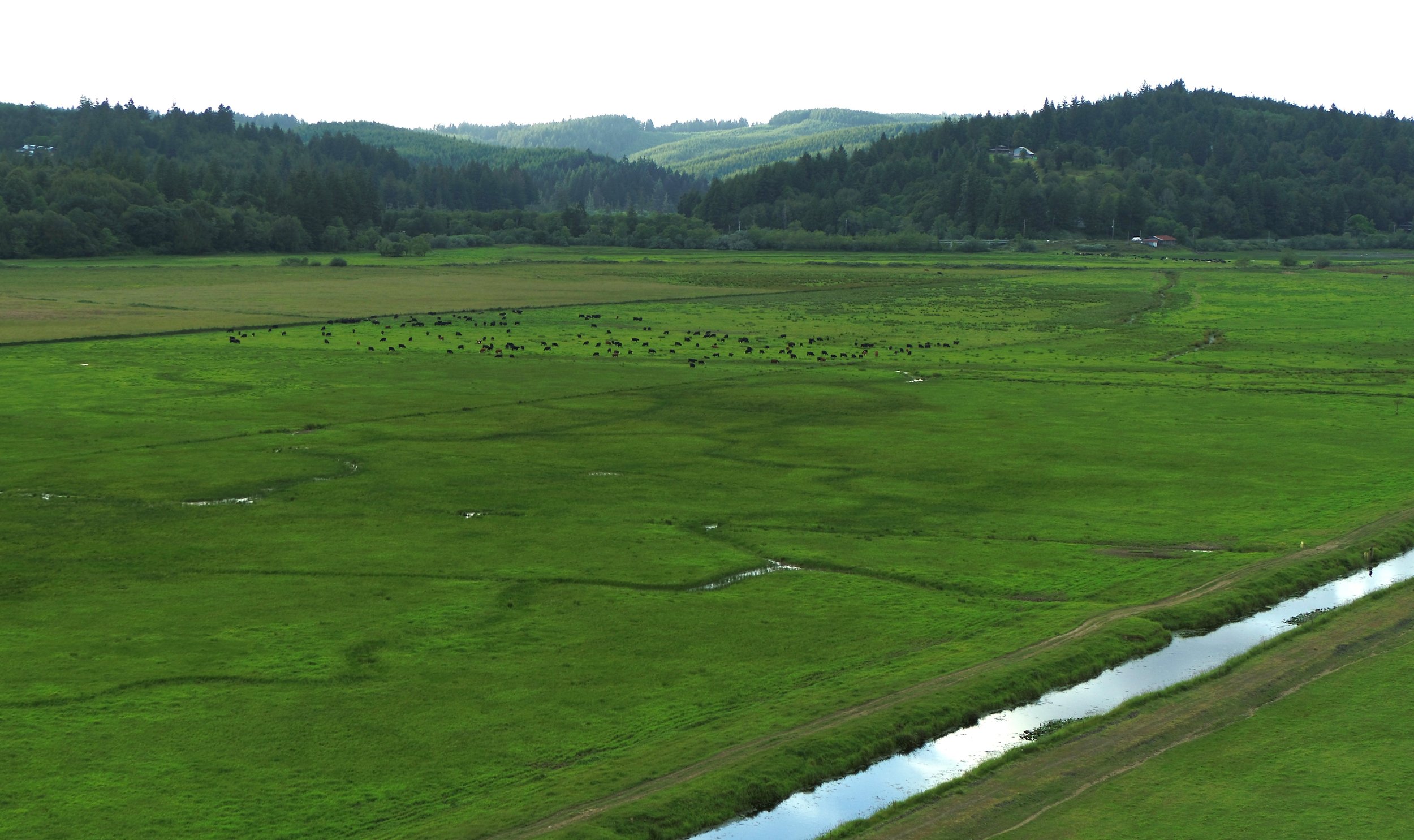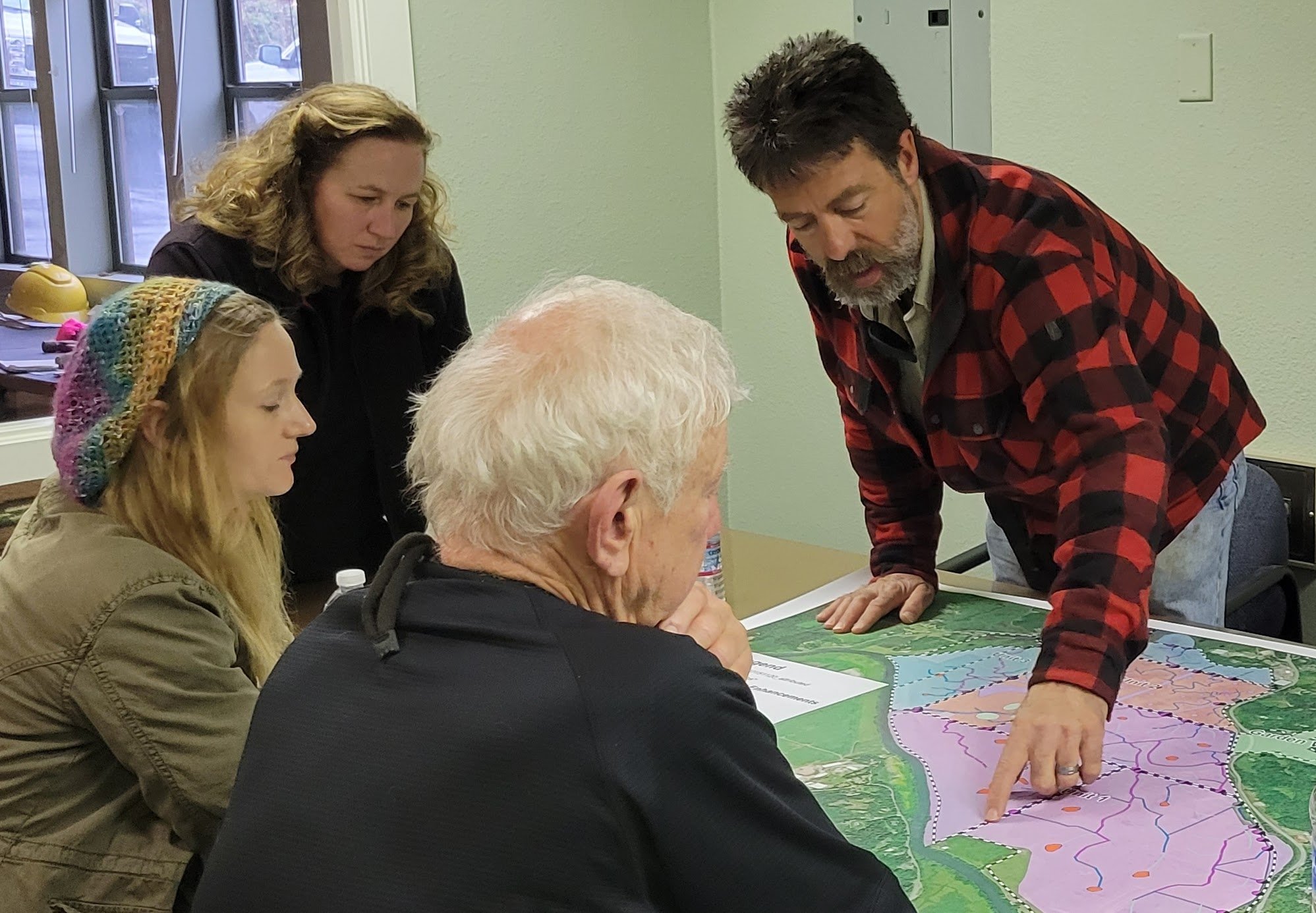Support The Bridges Foundation
Project Manager
Luke Fitzpatrick, Conservation Director
The Bridges Foundation
Luke.Fitzpatrick@thebridgesfoundation.info
Project Partners
Nate Chisholm & Hanna E. Hart
Craft3
The Nature Conservancy
Wild Rivers Coastal Alliance
Greenfield Hartline Habitat Conservation Fund
Beaver Slough Drainage District
Coaledo Drainage District
Coos Soil & Water Conservation District
Coquille Indian Tribe
Coquille Watershed Council
Oregon Department of Fish & Wildlife
Nate Chisholm and Luke Fitzpatrick, viewing Hart’s river Ranch, Coquille, oregon, september 20, 2021.
(Photo credit: Julie Fitzpatrick)
The Role for The Bridges Foundation:
Luke Fitzpatrick, Conservation Director for The Bridges Foundation, and its Trustees, Kathy Bridges and Jake Fitzpatrick, offer their talents and expertise to work with community partners to develop strategies addressing the following:
investigate and select the long-term holder of a perpetual conservation easement or public ownership for the 528 acres and to protect the conservation values for future generations.
coordinate with regional, State, tribal and federal agencies to design and implement strategies needed to promote the health of native fish populations and other wildlife including migratory waterfowl.
lower water temperature which is essential for salmon by planting riparian vegetation along the channels and provide improved summer habitat for fish fingerlings and smolts by installing hydrologic bulbs and deeper aquatic pools.
coordinate with Beaver Slough and Coaledo Drainage Districts and others to repair tide gates in a manner that maximizes the survival opportunity for native fish while continuing agricultural use of the land.
coordinate with the Coquille Indian Tribe to address native plantings as part of the restoration efforts.
support restoration activities for salmonid species on-site including scientific evaluation and fish tagging.
promote public education about the project within the Coquille/Bandon community, within Coos County and with the public-at-large.
coordinate with past owners of Hart’s River Ranch to ensure adequate summer pasture grazing continues as a working farm and as part of the overall restoration effort.
(Photo credit: Kathy Bridges)
(Photo credit: luke fitzpatrick)
Pacific lamprey. (credit: adobestock.com)
Coho salmon fingerlings. (credit: adobestock.com)
Fall chinook. (credit: adobestock.com)
(photo credit: luke fitzpatrick)
Photos above and below are from the adjoining property purchased in 2013-2015 by the Oregon Department of Fish & Wildlife. The adjoining 589 acres is known as Coquille Valley Wildlife Area (CVWA). Aerial photos indicate restoration of waterways and planting of riparian vegetation along their banks. The objectives established by the Oregon Department of Fish & Wildlife include: “(1) To protect, enhance, and restore fish and wildlife habitats located on CVWA, and (2) to provide a wide variety of wildlife-oriented recreational and educational opportunities to the public.”
(photo credit: luke fitzpatrick)
Since 2008, The Nature Conservancy and others have focused attention on conserving and restoring the Coquille River and Coquille Valley. Quick review of videos provides ample historical information and efforts of community partnerships working to address a new vision for the future.
Additional Resources Below
hart’s ranch. (photo credit: luke fitzpatrick)
Cattle grazing in the summer. (photo credit: Luke Fitzpatrick)
Donate to The Bridges Foundation to Continue and Expand Efforts to Conserve Habitat
Project History:
Grow Cattle in the Summer,
Grow Salmon and Migratory Waterfowl in the Winter
On March 1, 2022, The Bridges Foundation purchased 528 acres of tidal wetland, known as Hart’s River Ranch, in Coquille, Oregon. Assistance was provided by Craft3, Wild Rivers Coastal Alliance and The Nature Conservancy. The acreage is certified organic and is in use for cattle pasture grazing during the summer months.
Locals refer to this portion of the Coquille Valley as “Winter Lake” due to extensive flooding during the winter months. The primary focus is to use the existing infrastructure supporting agriculture consisting of tide gates, dikes and channels, while also focusing on conservation most notably addressing the survival of native fish species, primarily Fall chinook, Coho and Pacific lamprey, along with improving migratory waterfowl habitat.
shaded areas reflect 528 acres known as Hart’s river ranch. (credit: google earth)
Site History:
The main stem of the Coquille River is 36 miles long. It drains 1,059 square miles originating in the Coastal Range and enters the Pacific Ocean at the City of Bandon which is located on the Southern Oregon Coast in Coos County. Hart’s River Ranch is located at river mile 25.
The 528 acre property is located 25 river miles upstream from Bandon outlined in red on the upper right. (credit: google earth)
Coquille River is a “tidal-effect river” wherein the head of the tide can extend up to 41 miles upriver from its mouth at Bandon. Coquille Valley is characterized as a “drowned river valley,” or one that was formed by the partial submergence of an unglaciated valley that remains open to the sea.
Before the pioneers, the Coquille River was home to Coho, Fall chinook, Winter steelhead and Pacific lamprey, and were considered prized food by the Coquille Indian Tribe. The Coquille Valley played, and continues to play, a primary role in the Pacific Flyway for migratory waterfowl.
With the arrival of pioneers in 1855, those settling within the Coquille Valley enjoyed the fertile valley lowlands surrounded by the timbered coast range. Early enterprises included timber harvest, production of dairy products and mining of coal. Because of the rise and fall of water levels and extensive flooding during the winter, Coquille Valley was channeled, enabling its fertile soil to provide lush summer pasture. Steam-powered sternwheelers, burning wood or coal, used the channels to barge timber and coal from the foothills. The 17,000 acres of prime fish and wildlife habitat was converted into pastureland and by the 1990s, only 373 acres of tidally influenced wetlands remained. The Coquille Valley enjoys the most numerous species of waterfowl and shorebirds during migration and wintering periods between San Francisco and the Columbia River. It also harbors the Coho salmon, now considered “Threatened” under the Endangered Species Act.
Today, the Coquille Valley bears a crisscross of channels, dikes and channels. While offering plush summer irrigated pasture, its effect over many years has significantly impacted native fish populations. Blockage to streams by tide gates, many of which are now in disrepair, along with destruction of fingerling and smolt habitat, have played a significant role in the declining of success within native fish species. This has been further compromised by the introduction of nonnative predatory species in the Coquille River, including Hybrid Striped bass and Smallmouth bass, which feast on emerging salmon smolts headed from freshwater to the Pacific Ocean.
wINTER vALLEY WAS ONCE TIDAL MARSH. it WAS DRAINED by constructing CHANNELS, DIKES AND TIDE GATES. tODAY wINTER VALLEY provides LUSH IRRIGATED PASTURE USED IN THE SUMMER FOR CATTLE GRAZING. (Photo credit: luke fitzpatrick)
Tidal gate currently in disrepair in the coaledo drainage district. (photo credit: luke fitzpatrick)
Cattle pasture: Riparian vegetation was removed, which increased water temperatures and reduced habitat.
(photo credit: luke fitzatrick)
Why Does the Bridges Foundation Need Donations to Support Conservation Projects?
The Bridges Foundation is a family operated private foundation and donations are needed to provide support to continue these types of activities. For this project, The Bridges Foundation received a donation from The Nature Conservancy, with substantial assistance provided by the Wild Rivers Coastal Alliance, and a loan from Craft3. In order to pursue these types of projects, The Bridges Foundation needs support from donors to pay for property taxes, water rights, travel to sites with goals to promote local networking and long-term strategies, and to pay the interest on the loan. The Bridges Foundation’s past track record and its ability to network and coordinate with others, the Trustees are excited to participate in this conservation effort. The following efforts have been made to improve native fishery habitat on the Coquille Tidal Wetland Conservation Project.
Beaver Slough Tide Gate
In 2017, construction began on new infrastructure to restore and improve agriculture and natural resources on 1,700 acres of land within the Beaver Slough Drainage District. The $10 million project was paid with support from federal and state grants following eight years of planning, surveying, and securing funding.
Luke Fitzpatrick with Fred Messerle, Beaver Slough & coaledo Drainage Districts. (Photo credit: kathy bridges)
tide gate for beaver slough drainage districT. (photo credit: luke fitzpatrick)
Major tide gate restoration for the beaver slough drainage district emptying into the coquille river. (Photo credit: Luke Fitzpatrick)
Coaledo Tide Gate Replacement, Riparian Planting, Livestock Fencing & Livestock Watering Sites
To date, $2.2 Million has been secured by a joint application from the Coquille Watershed Association and Coquille Indian Tribe from NOAA Pacific Coastal Salmon Recovery Fund and the Wild Rivers Coast Alliance. Input from The Bridges Foundation laid the groundwork for 50’ wide riparian boundaries including planting of native cultural plants indigenous to the cultural traditions and heritage of the Coquille Indian Tribe.
The Water Management Plan for the “Coaledo Tide Gate Replacement & Fish Passage Project” awaits approval from members of the Coaledo Drainage District. Following approval, permits will be sought from U. S. Army Corps of Engineers and Oregon Division of State Lands.
Cyndi Curtis, Coquille Watershed Association at Hart’s River Ranch.
(Photo credit: kathy bridges)
Robin Harkins and Helena Linnell, Coquille Indian Tribe.
(photo credit: kathy bridges)
Channel Enhancements, Hydrologic Bulbs, Wetland Ponds & Elevated Wildlife Mounds
To date, Coos Soil & Water Conservation District and Oregon Department of Fish & Wildlife are preparing the design and related permit requests to be submitted to U. S. Army Corps of Engineers and Oregon Division of State Lands with the goals to improve summer fish habitat. Input from The Bridges Foundation laid the groundwork for enlarging hydrologic bulbs and wetland ponds for fish and added elevated wildlife mounds for
migratory waterfowl.
Chris Claire, Oregon Department of Fish & Wildlife (right). Others include Ken Dunder; Caley sowers, coos county soil & water conservation district and JENA Carter, The Nature Conservancy. (photo credit: kathy bridges)
With your generous donation, you are making it possible for The Bridges Foundation to continue to pursue these types of projects. Thank you for supporting the Foundation’s efforts.
Oregon Watershed Enhancement Board, Pacific Coast Salmon Recovery Fund, Wild Rivers Coastal Alliance and
Oregon Department of Fish & Wildlife Commits
$3,487,291
for Tide Gate Replacement and Fish Passage Project
In March of 2023, Oregon Department of Fish & Wildlife awarded an additional $503,415 to support the project.
Riparian Vegetation Along Beaver Slough: On November 9, 2022, $683,876 was awarded by the Oregon Watershed Enhancement Board to the Coquille Watershed Association to support the "Coaledo Tide Gate Replacement and Beaver Slough Fish Passage Project." The purpose of the grant is to improve stream water quality by removing non‐native vegetation and planting native tree species along Beaver Slough. Exclusion fencing up to 50' will be installed to prevent livestock from accessing the stream. The restoration activities will enhance the nearby tide gate replacement work. Rushal Sedlemyer, Restoration Project Manager, and Anna Pfeifer, Riparian Habitat Project Manager, will oversee native plant restoration and will coordinate with the Coquille Indian Tribe to ensure native cultural plants are incorporated into the riparian design.
Coaledo Tide Gate Replacement & Fish Passage Project Water Management Plan Approved: On September 26, 2022, the Coaledo Drainage District approved the "Coaledo Tide Gate Replacement & Fish Passage Project" prepared by Cyndi Curtis, Restoration Program Coordinator, Coquille Watershed Association.
Replace the Coaledo Tide Gate: On June 3, 2022, $2.2 Million dollars was approved by the Pacific Coast Salmon Recovery Fund (NOAA) to replace the Coaledo Tide Gate on the property. Funds were provided through a joint-grant partnership application prepared by the Coquille Watershed Council and the Coquille Indian Tribe with a letter of support from The Bridges Foundation. An additional $100,000 from Wild Rivers Coastal Alliance has been allocated to assist.
“The Coaledo Tide Gate Replacement and Fish Passage Project proposes “the removal of existing tide gate infrastructure and the installation of three 8’x10’ concrete box culverts that support side-hinged aluminum tide gates controlled by Muted Tidal Regulators (MTR). The MTR device will allow for controlled inflow of tidal waters to a level that can be set and is controlled by a float on the upstream side of the structure governing the mechanical MTR device. In addition to the MTRs, each gate will be equipped with a smaller 3’x3’ slide gate incorporated into the door that can be opened vertically, allowing for additional management independent of the side-hinged door openness. The overall intent for the project is to allow for maximum tidal ‘breathability’ to the greatest degree possible, accentuating ecological goals, while accommodating the needs of landowners and infrastructure, within coordinated management goals. A major outcome of this project is the adjustment of the tide gate to meet seasonal tidal inflow/outflow goals as guided by the Water Management Plan (WMP), collaboratively developed with Oregon Department of Fish & Wildlife, the Coaledo Drainage District landowners, and regulatory agencies.”
The Bridges Foundation
Coquille Tidal Wetland Conservation Project
Luke Fitzpatrick, Project Manager
Luke Fitzpatrick grew up on a livestock farm located in Turner, Oregon (south of Salem). He received his bachelor’s degree from Oregon State University majoring in Forest Management with a minor in Wildlife Fire Science.
Previously, Luke worked for U.S. Forest Service, Oregon Department of Forestry, U.S. Geological Survey and private timber companies and has done timber cruising in the Coos County area.
Aquaculture: Luke took on the management of his family’s aquaculture business which began in 1982. Today, Luke operates Santiam Valley Aquaculture, a warm-water fish propagation facility licensed in Oregon, Washington and Idaho. Luke has developed a unique expertise in pond/lake design and management working with natural topography and native plant species and provides pond/lake consulting services in all three states.
Working Wetland or “Swamp Farming”: On his 350 acres, Luke uses cattle as “ungulates,” replacing the elk and deer that once roamed. The goal is to disturb the soil, creating primary micro- and macro- organisms that in turn provide nutritious habitat for fish and migrating waterfowl. During winter months, Luke operates five waterfowl hunting clubs.
Habitat Conservation & Restoration: Luke has nearly 100 acres enrolled in the U.S.D.A. Natural Resource Conservation Program, Wetland Reserve Program (WRP).
The Bridges Foundation: Luke serves as Trustee and Conservation Director and brings extensive experience, expertise and awareness to this tidal wetland project in Coquille.
Luke fitzpatrick at hart’s river ranch, coquille, ORegon, march 2022.
(photo credit: kathy bridges)
(photo credit: kathy bridges)




